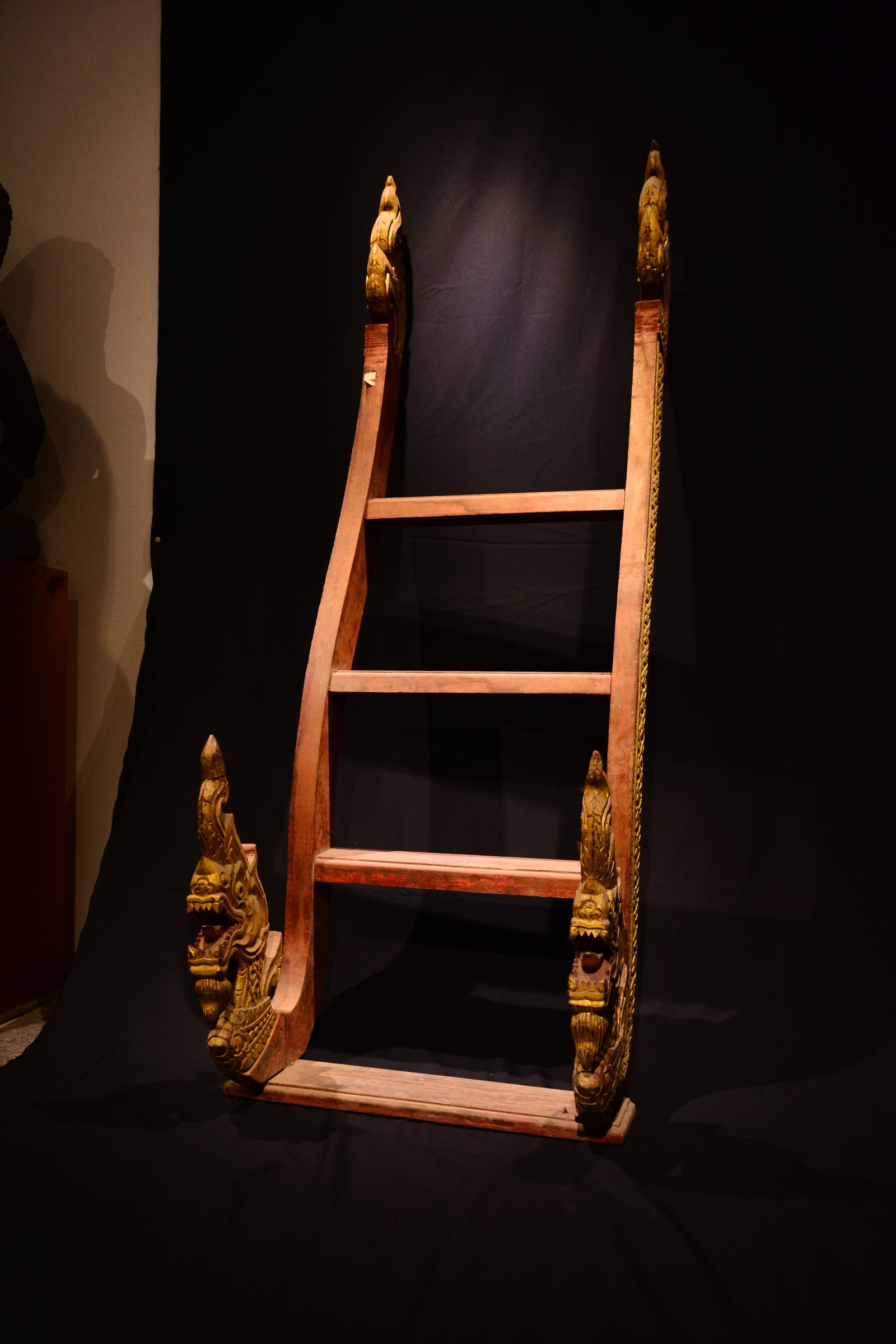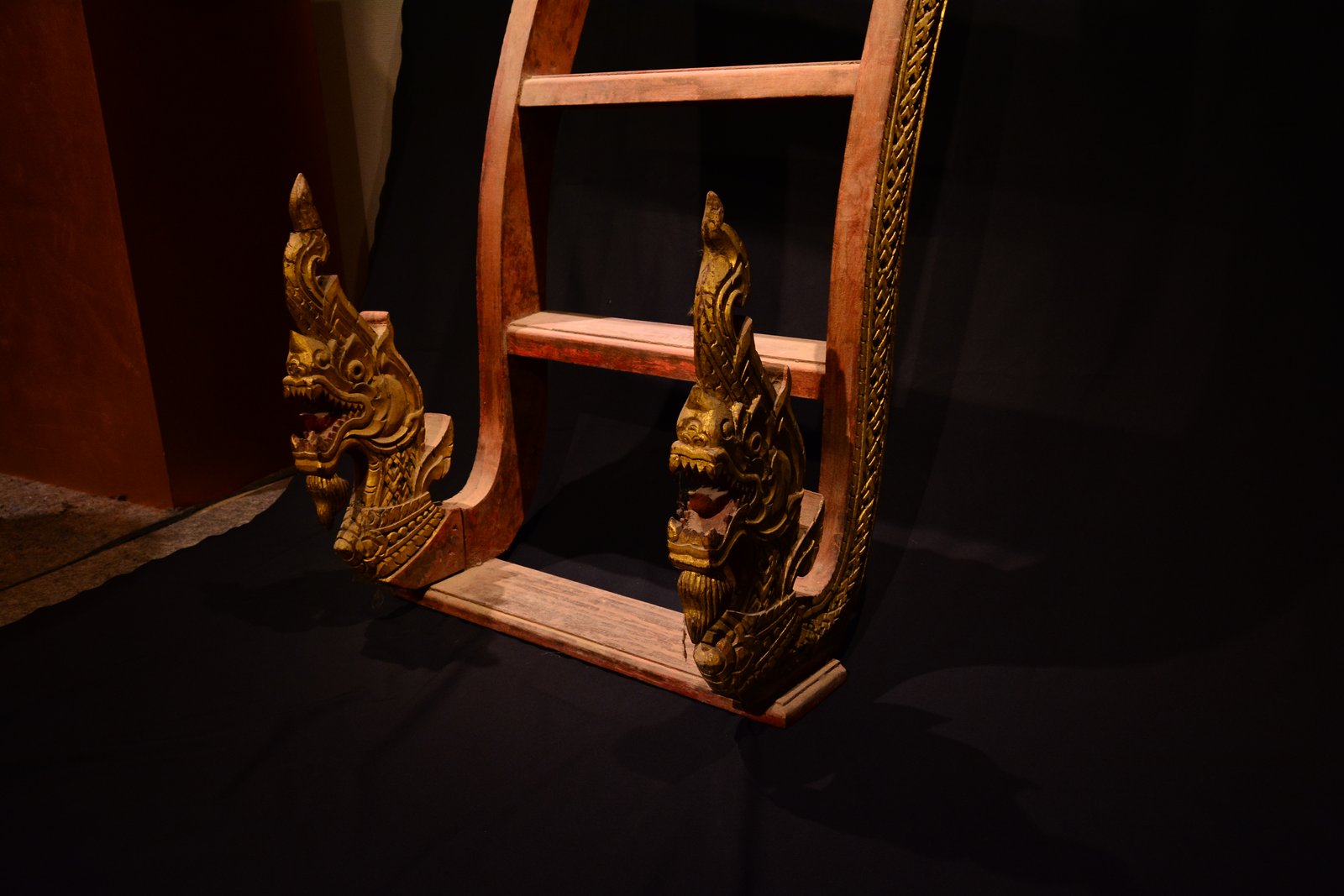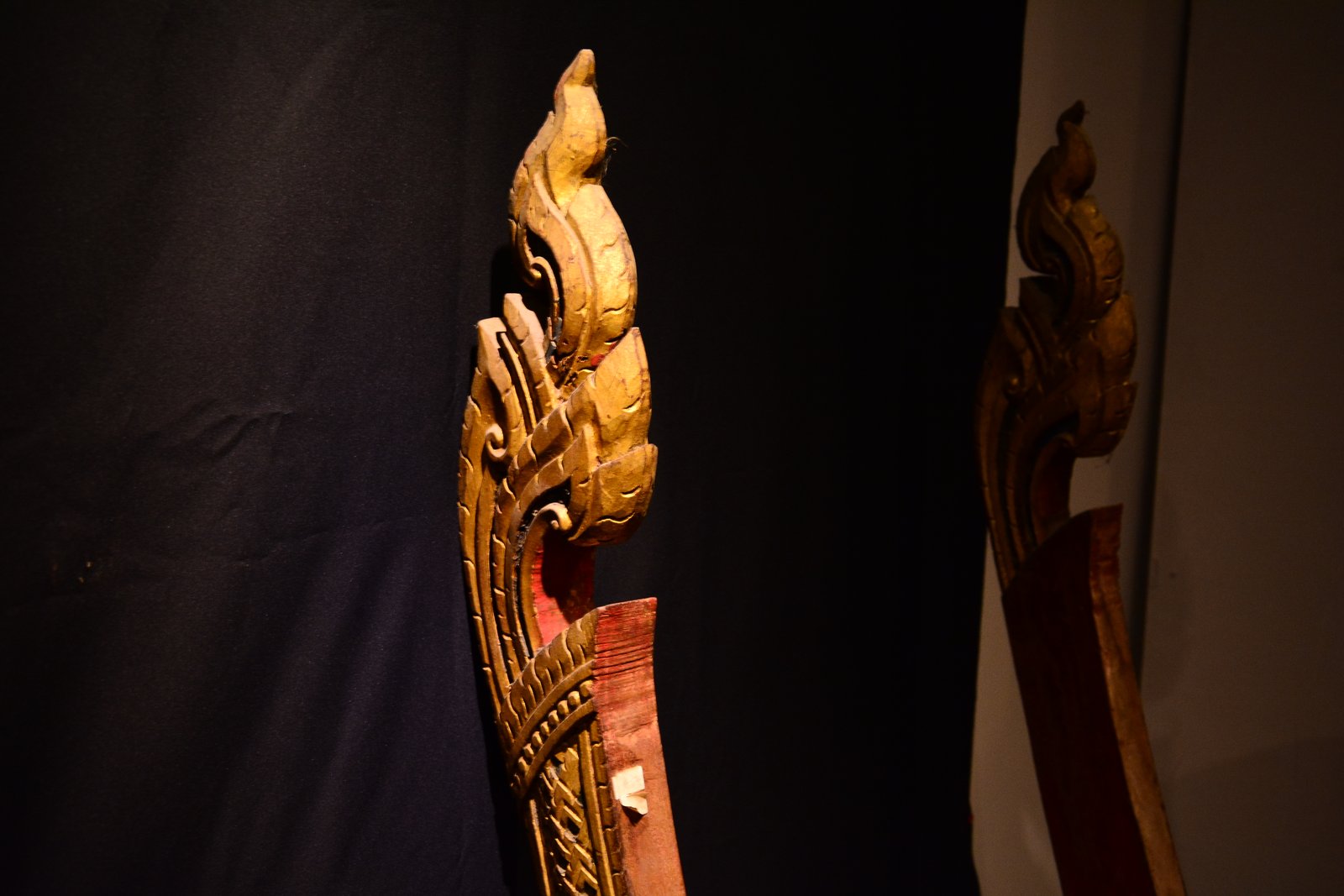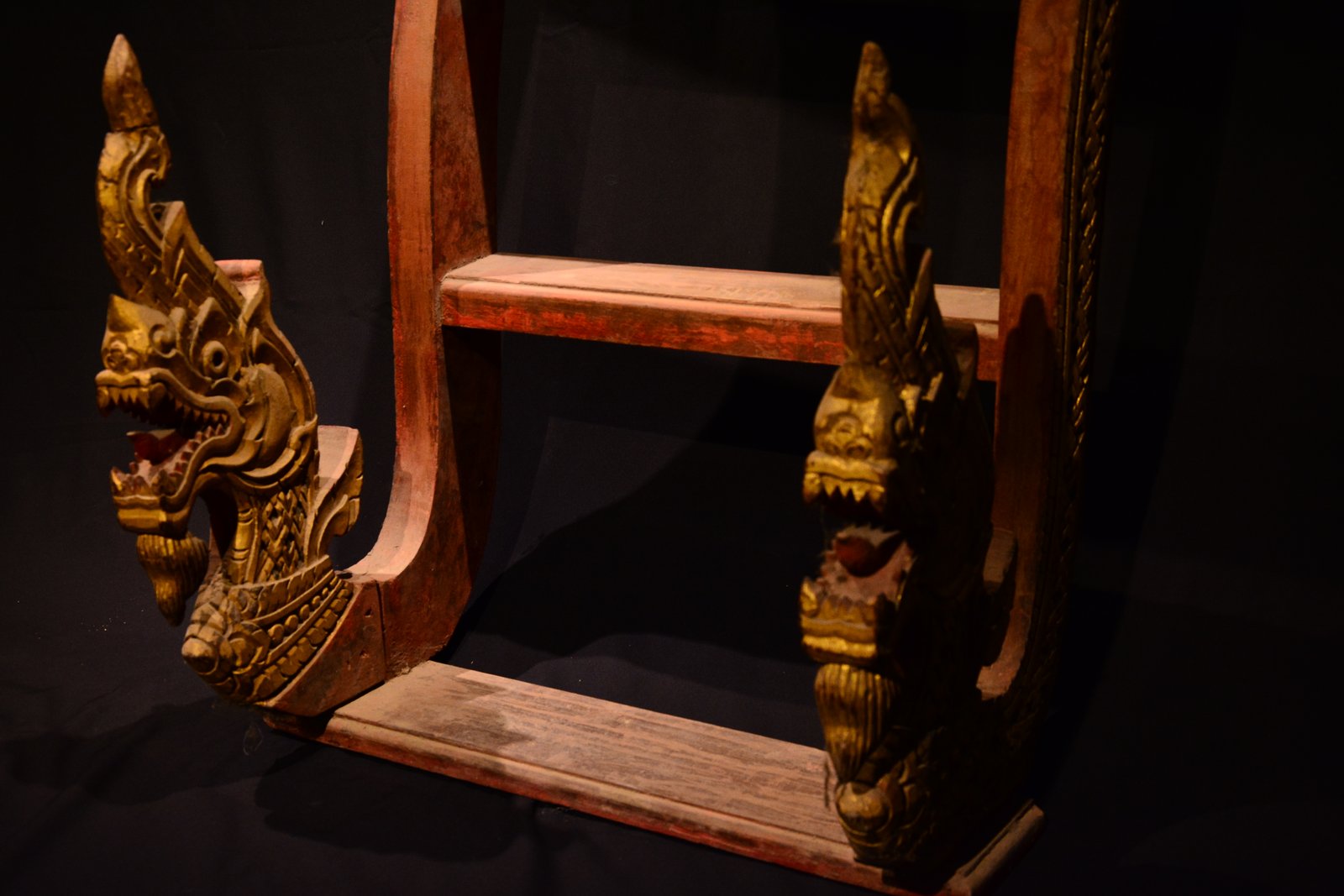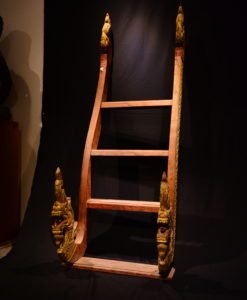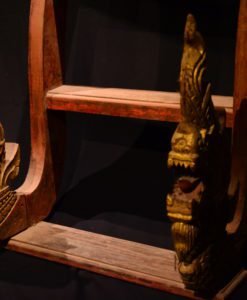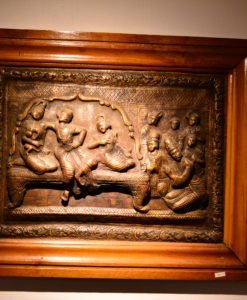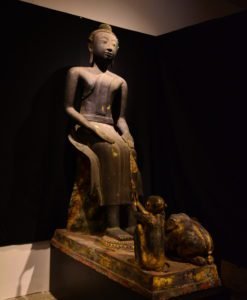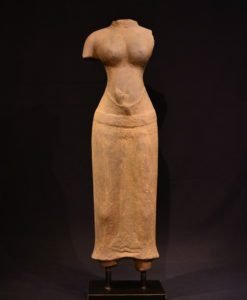Ratanakosin Period Wooden Naga Stair – A Masterpiece of Thai Art and Craftsmanship
The Wooden Naga Stair from the Ratanakosin period is a captivating example of Thai craftsmanship and religious symbolism, offering both functional design and cultural depth. This remarkable piece, likely used by monks during religious ceremonies, highlights the elaborate artistry of the Ratanakosin period, known for its continued homage to the traditions of the earlier Ayutthaya era.
ITEM DESCRIPTION
A Functional Object with Sacred Significance
While it serves as a ladder-like structure, this Naga stair was more than just a practical object. Monks likely used it during rituals and ceremonies to elevate themselves, embodying a deep spiritual symbolism. The elevated platform would have allowed the monk to be positioned above their followers, symbolizing their higher spiritual status and role as a teacher in Buddhist rituals. Its use in monastic ceremonies is not only a display of the sacred but also a functional tool in everyday religious practices.
Exquisite Naga Carvings: Symbol of Protection and Power
At both ends of the Naga stair, elaborate Naga carvings (serpent deities) are featured. These carvings are more than mere decorative elements—they hold powerful cultural significance. In Thai and Southeast Asian Buddhist symbolism, Nagas are revered as protectors of the earth and water, often associated with fertility, royalty, and guardianship. The presence of these mythical creatures at the top and bottom of the stair implies a protective role, symbolizing divine intervention over the sacred space where it would be used.
The intricacy of the carvings speaks to the masterful skill of Thai woodworkers during the Ratanakosin period (1782–present). This period saw a flourishing of royal patronage, with artisans creating works of extraordinary detail and craftsmanship that still captivate collectors and historians today. The wooden craftsmanship is indicative of the traditional Thai art form, where nature and spirituality converge into a singular, harmonious expression.
The Ratanakosin Period: Continuation of Tradition
The Ratanakosin period is known for its elaborate ornamental design, particularly in religious and royal objects. It succeeded the Ayutthaya period, carrying forward the artistic traditions while developing distinct styles that emphasized grandeur and symbolism. Much of the period’s art was designed for the monastic community and to reflect the Buddhist ethos of the time.
This Naga Stair would have been created during a time of great cultural and religious transformation in Thailand, where art and religion were deeply intertwined. The use of wooden sculptures such as this reflects the materials and artistic styles favored by artisans who worked under royal commissions or temple patrons.
Material and Construction: A Testament to Thai Craftsmanship
Made from wood, likely teak or a similar durable hardwood, the Naga Stair demonstrates the high-quality materials used in Thai sculptures of this period. Wood, with its natural beauty and ease of manipulation, was the preferred material for creating both functional and decorative objects. Over the centuries, patina has developed on the surface of the wood, adding character and a sense of antiquity to the piece.
The Naga carvings are not just aesthetically pleasing; they serve a functional purpose, providing stability to the stair structure. The symmetry and detailed carving are characteristic of the period, where woodworkers would spend countless hours to perfect every curve and detail.
Symbolism of the Naga in Thai Culture
The Naga in Southeast Asian mythology, particularly within Thai culture, represents divine protection and the connection between the human realm and the spiritual world. These serpent deities are often seen as guardians of sacred spaces, and their inclusion in the Naga Stair suggests that the object was not only functional but imbued with deeper spiritual meaning. It is not just a piece of art, but a sacred object with the ability to invoke protection and blessing for those who used it.
Why This Naga Stair Is an Essential Addition to Your Collection
This Wooden Naga Stair is a rare find—a piece that marries functionality with spiritual depth. It is a stunning example of Ratanakosin period craftsmanship and a vivid portrayal of the spiritual importance of art in Thai culture. Whether you are an antique collector, a lover of Buddhist art, or simply someone who appreciates exceptional craftsmanship, this Naga Stair would be a prized addition to any collection.
Final Thoughts
From its symbolic Naga carvings to its historic connection to the Ratanakosin period, this Wooden Naga Stair is a masterpiece that carries both artistic and spiritual significance. Its elegant design and intricate carvings make it a standout item for anyone seeking to own a piece of Thai religious history. This stair is not only a decorative object but also a conversation piece that holds deep cultural and religious meaning.
Add this exceptional Wooden Naga Stair to your collection and embrace a piece of Thailand’s rich cultural heritage.
References:
-
Chao, A. (2011). Thai Wood Carvings: The Art and Craft of the Ratanakosin Period. Bangkok University Press.
-
Sivakorn, P. (2014). Symbolism of the Naga in Thai Art. Journal of Southeast Asian Cultural Studies, 15(2), 45-60.
-
Wong, L. (2009). Crafting the Sacred: The Role of Thai Art in Buddhist Rituals. Bangkok: Arts Council of Thailand.
Origin: Thailand
Period: Rattanakosin
PRODUCT DETAIL
Medium:Wood
Dimensions:
Height – cm
Length – cm
Wide – cm
Condition Report: –
Please keep in touch for Price and more information: Mallika1013@gmail.com



